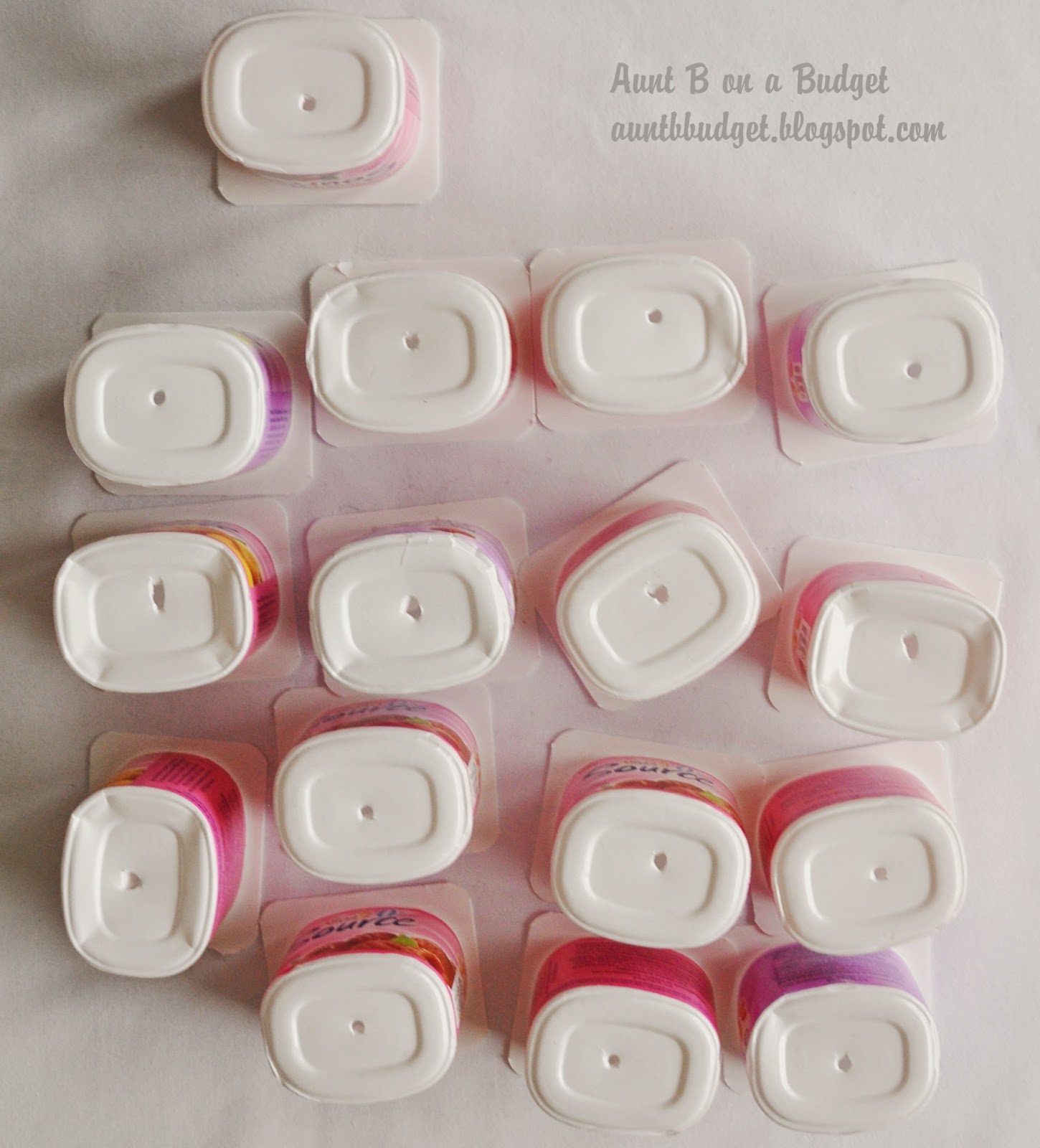One of the things I love about plants is that, once you now how to propagate them, you can have an abundance of them for very little money.
My fella teases me about it, but I almost never go anywhere without several small ziploc bags, a small pair of scissors, and a jack knife in my pocket. I use them to gather seeds and take cuttings. Over the years, this habit has provided me a lot of plants, including an assortment of very pretty African violets.
I've been given a few African violets as gifts over the years but I don't think I've ever purchased one myself. If I come across a plant I admire, I ask permission to snip a leaf or two and then I bring them home and grow plants of my own.
As plants from cuttings go, I've doubt I've encountered any easier to grow than African violets. My success rate with these cuttings is 80% or more. If you'd like to give it a try, here's how to do it:
Prepare pots for your cuttings. I use clean single serving yogurt cups with a hole poked in the bottom.
Fill the pots with African violet potting soil. Several companies make specialized blends formulated for this plant's specific needs. They're available at most garden centres.
The soil should be quite loose within the pots. Don't tamp it down.
Put the pots on a tray that is deep enough to hold at least half an inch of water. I use an old baking sheet.
Trim some leaves from the outer edges of mature African violet plants. Choose the leaves with the longest stems and cut them with sharp scissors as near the base of the stem as you can. Stick the stems of the leaves into the soil in your prepared pots.
Place the pots where they'll receive bright indirect light and water them as needed.
Soon you'll see small leaves appear at the base of the leaf you planted.
Sometimes just a single leaf will appear. Sometimes, they sprout up in bunches. It really depends upon the variety of African violet you're working with.
Let your leaf cuttings continue to grow in the small pots you started them in until they've formed a plant with multiple leaves and an established root system. Once they've done that, transplant them into larger pots.
Here are a few tips that will help you with starting African violets from leaf cuttings:
- You can start your cuttings at any time of year but they'll root more quickly when the daylight hours are longer.
- Light does make a difference. I start my plants on a table by an east facing window, where they receive direct light in the early morning and bright, indirect light the rest of the day.
- Always water your African violets from the bottom, pouring water into a saucer or tray beneath the pot rather than onto the soil around the plant. If the violets' leaves get water on them, they'll turn brown.
- Don't over-water your plants even when they're just starting. Let the surface of the soil dry between waterings and when you do water, allow the soil to moisten all the way through before emptying any excess water from the saucer or tray beneath the pot. Don't leave the pots standing in water after the soil is moistened.
And that's pretty much it, really.
I have a sort of African violet assembly line going on at my house. Every time I pot up a plant I've started from a leaf cutting, I start another cutting in the empty pot. It provides me a nearly continuous supply of small plants.
I pot my African violets in all sorts of containers that I find in thrift shops - tea cups, tea pots and sugar bowls without lids, small pitchers, bowls, pretty tins - whatever takes my fancy.
My fella drills holes in the bottoms of the containers for me, using a diamond bit on a Dremel tool. I set the containers in thrift store coasters or saucers,or in plastic containers I salvage from the recycling bin.
My whimsical thrift shop containers with their pretty plants make lovely small gifts. They're frugal to give, you can choose a container with its intended recipient in mind, and if you wrap the gift in some clear cello tied up with a ribbon or even some jute twine, they make a pretty presentation.
I'm not usually a Christmas in July person, but this gift is an exception to that rule. Plants from cuttings do take some time to grow, so advance planning is required. If you start African violet leaf cuttings now, though, they should be ready for gift giving in December.
























